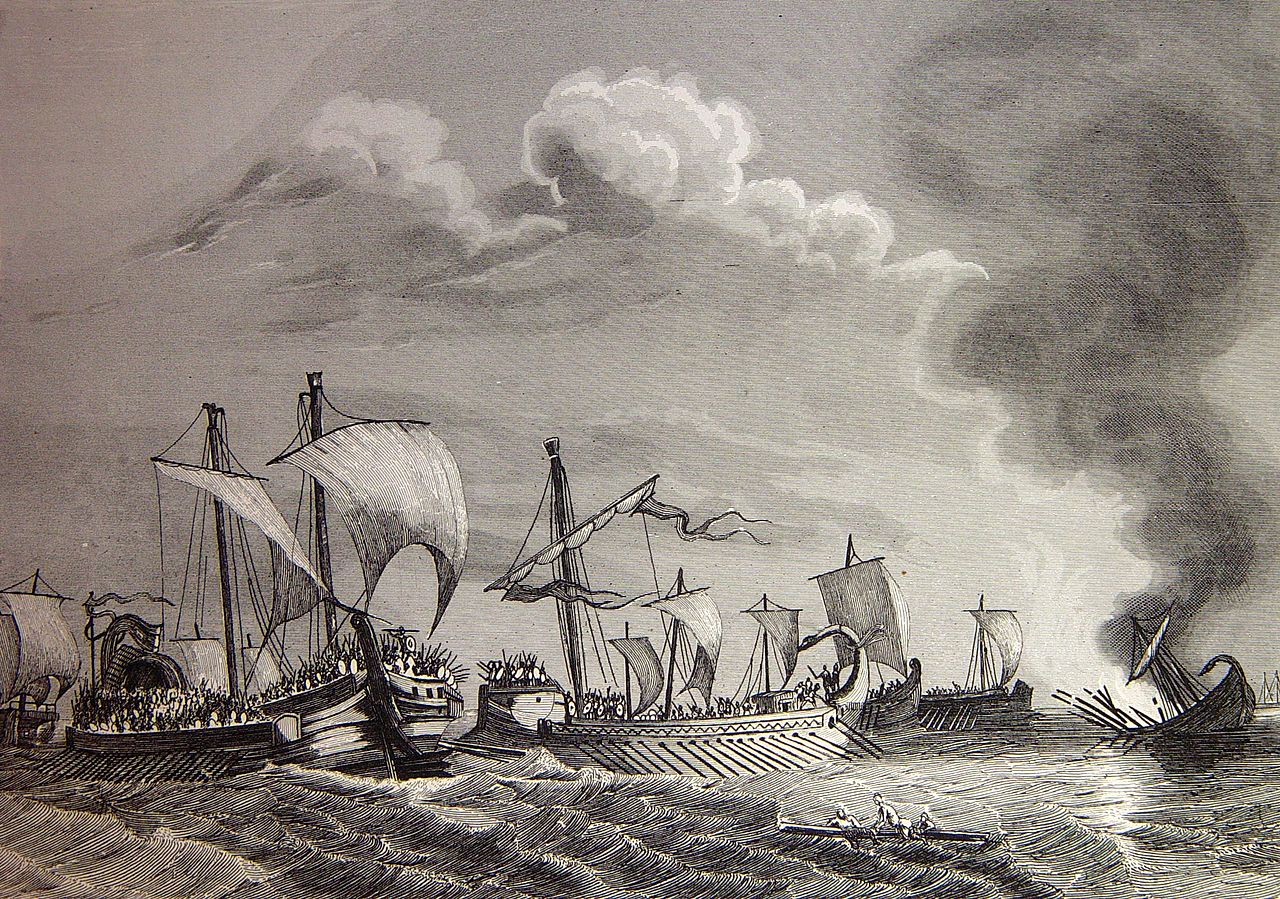A precisely sixty-year period, to the day and possibly even the hour, that is utterly unattested in all historical and archaeological records. Written histories and even calendars from this era appear to skip over this period entirely, and contemporary scholars have yet to figure out why.
Remove these ads. Join the Worldbuilders Guild

World History - The Big Picture
The First Era / The Ancient Era
1 HE 3421 HE
The Ancient or First Era saw relatively favorable environmental conditions and sufficient population growth for the development of fully settled, agrarian societies, from which writing—and thus the first written historical records—emerged. With the establishment of the first urban centers came the first achievements and ailments of what is often deemed civilization: specialized professions and crafts on one hand, and social inequality, disease, and warfare (beyond inter-tribal blood feuds) on the other. In some schemes, this era is also dubbed "the Pious Era" given the rise of organized religions at this time, especially throughout the second half of this era when the development of urban centers and consolidation of political power both accelerated rapidly. (A few fringe historians argue that these developments became possible only when humanity overthrew the Shadrusun hegemony, yet the mainstream theory remains that these advances in human civilizations resulted from largely cooperative exchanges with the Shadrusun.) Considering worship of gods and otherworldly beings was already prevalent during the Archaic Era, it is likely that the Ancient Era's organized, hierarchical religious institutions were developed as means of social control to manage the rapid development of civilizations. An alternative, not necessarily contradictory explanation is the possibility that those individuals learned to effectively supplicate higher powers for magical aid were soon able to consolidate their power on a large scale. Archaeological evidence marking the beginning of this era arose from two finds, one in Takhet and one in southwest Au-na-Lai, both consisting of writing including mathematical and other abstract symbols. (Pictographs are found in caves and other well-preserved sites much further back, but do not clearly exhibit communication of abstract concepts.) The Takhet Cave script vastly differs from the first writings found in Au-na-Lai, suggesting they were invented separately, while the Takhet Cave script bears notable similarities to the Agratekti logographs which emerged a few centuries later. Philological work strongly suggests that the Western writing systems emerged thanks to the direct influence of the first known Shadrusun civilization, yet given the proximity of the Shadursun homeland to the Haifatneh Basin, it remains a mystery why the first Western script emerged in Takhet.
-
2692 1E
2752 1E
The Lost Era
Metaphysical / Paranormal event
The Internecine Period / The Crusade and The Reconquest
3422 HE 3501 HE
The Internecine Period marks the height and downfall of the Continental Crusade, a historical watershed period in which over-ambitious settlers and invaders from an unknown realm landed on the Continent's shores en masse. Apparently seeking new lands for their people under religious pretenses, these settlers launched a wide-ranging, decades-long war that resulted in the unraveling of social order and great setbacks in social progress across much of the Continent. In earnest, the first Crusader-mainlander encounters took place on the bay of Au-na-Lai a few years prior to 3422 HE, but these Crusaders met a united Dai empire with the Continent's most advanced maritime technology at that time. Subsequent fleets of Crusaders found a more suitable staging area in the territory where they would build the Citadel of Andaen. Commonly accepted reasons for this are the Andaen Territory's natural harbor, its strategic location along the Haifatneh Strait, and the comparatively limited resistance posed by its inhabitants at the time of the Crusaders' first excursions there. Thus, official histories typically mark the Internecine Period as beginning and ending with the occupation and then reconquest of the Andaen Territory.
-
3422 IE
Nashuru
The Founding of Andaen
FoundingAfter initial small-scale expeditions, the first Northerner settlers made landfall on late Jaatin of 3422 at the site where they would build the settlement of Andaen. That this site quickly became known as a "crusader citadel" is attributed to the early violent encounters between the Northerners and those who were indigenous to the region (likely Haifah predecessors), as well as the Northerners' subsequent expansionist tendencies and their projects to assimilate local populations into their religion and culture. Thus, the founding of Andaen is now considered to be the initiating event of the Continental Crusade.
Location
Andaen, The Crusader Citadel of -
3433 IE
Mashpalu
The Closing of the Hallows of Baitha
Military: BattleOn or around 11 Qushrabash, the Order of the Returning Sun launched their attempted assault upon the Hallows of Baitha, a pantheonic temple complex now popularly known as the Ashen Hallows. Although they apparently did not capture or destroy the complex, their razing of the city of Baitha itself and the subsequent closing of the Hallows to all outsiders has since been enshrined as the widely accepted end date of the Order's purge of Agratekt.
Location
The Ashen Hallows of Old Agratekt -
3501 IE
3501 IE
The Assault on Andaen
Military: Battle
The Second Era / The Grim Era
3502 HE 4132 HE
The Second or Grim Era is characterized by the decentralization of political and religious power in the aftermath of the Continental Crusade. An immediate effect of the Crusade was the collapse of several large polities due to invasion or internal division, leading to widespread neglect of the travel infrastructure and regional economic networks that encouraged cooperation and progress in better times. (A few early accounts from Au-na-Lai additionally note a serious epidemic that unfolded shortly after the first encounters with arriving Crusaders. Though this historical episode remains under-explored, it is worth considering whether this incident helped contribute to the political upheavals there leading up to the Grim Era.) Though the Crusaders endeavored to impose a new social order by evangelizing and instituting their apocalyptic, fundamentalist religion, the ultimate failure of the Crusade to leave a stable legacy prompted the widespread abandonment of the Crusaders' religion. Meanwhile, many earlier religious institutions had failed to survive purges by the Crusade. These two factors resulted in widespread irreligiosity, particularly among the peoples of the Haifatneh Basin, for the first time in recorded history. The emergent religions of this era venerated seemingly any entity or power—previously obscure gods, beings of less knowable natures, and even prominent mortals at times—that promised power or at least solace from the ravages of the time, and bitterness over the excesses of the Crusade ensured a widespread distrust of global, evangelizing religions. That said, a syncretic folk religion incorporating key Crusader figures and old Takheti gods has become fairly popular in Vast Takhet; the semi-religious mysticism of Au-na-Lai and the animistic religions of the hinterlands, too, remain largely intact. Even as the peoples of the Continent began to recover from the worst effects of the Crusade, the political landscape remained fragmented as small, insular factions navigated it through violence or alliances of convenience at best. Late into the Grim Era, a failed assault upon Andaen by the rising warlord-state of Great Waharreh in coastal Takhet secured the dominance of Andaen in the age to come. Meanwhile, the Grim Era's upheaval of ancient institutions, both religious and political, also paved the way for a revolution of innovation and thought centered on Andaen's first universities and trade guilds.
-
 3690 2E
3690 2E
3690 2E
The Second Assault on Andaen
Military: Battle






